Ice caves are a beautiful phenomenon and going on a glacier ice cave tour is truly a unique experience. There is something so magical about glaciers. It’s hard to describe what it is exactly that fascinates me about them though. I think it’s the silent power I feel in the air around them. So calm. Yet so powerful. If you haven’t yet experienced them yourself, I strongly recommend that you do. Feel their silent energy and enjoy the beauty of the different and ever changing sculptures they create.
A few weeks ago I spent the weekend at Skaftafell in Vatnajökull National Park in South East Iceland. In this area the glaciers are the main attraction. And no wonder. They are spectacular. I hadn’t really paid them much attention until last summer (2020). I don’t know why. But now when I’ve started to explore them in different ways, I can’t get enough! I’ve fallen in love.
A Weekend Trip with a Glacier Theme
The weekend I spent in Vatnajökull National Park had a glacier theme. Surprise, surprise. I went glacier hiking for the second time and this time it was an even more amazing experience than the first time. You can read all about that experience here. Then I took a walk to Skaftafellsjökull Glacier where I got up close to huge, really cool black icebergs.
You can read about my first glacier hike hereThe Glacier Lagoon and the diamond beach were of course also a part of this glacier themed trip and then there was the icing on the cake. The breathtaking ice cave I visited.
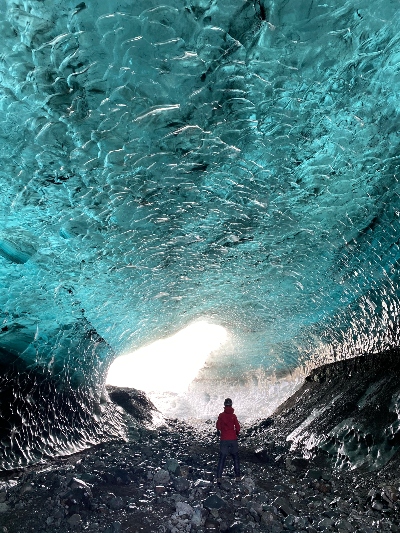
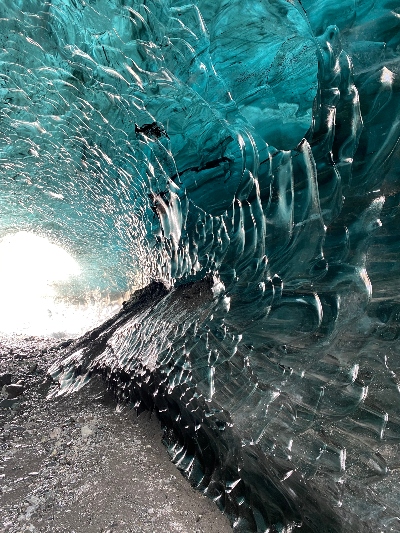
Ice caves in general are a beautiful phenomenon. They are formed by meltwater that runs under or through a glacier, leaving behind an open space or a cave inside the glacier. The caves come in all shapes and sizes and even in different colours. This particular cave I went to see, was big and utterly amazing. It was so much more beautiful than I anticipated. Love when that happens. Love when new places exceed my expectations.
A Super Jeep Tour to a Breathtaking Turquoise Ice Cave
To get to the cave you need to book an ice cave tour with a tour operator as you won’t be able to get there yourself. I booked a tour called “Crystal Blue Ice Cave | Super Jeep from Jökulsárlón” with Tröll Expeditions. The tour guide picked us up in a super jeep at the Glacier Lagoon. I totally forgot to time the drive from the lagoon to the parking lot by the cave. If I had to guess, I would say it took somewhere around 30 minutes (one way). Possibly a little bit longer.
You can see the tour I booked with Tröll Expeditions hereThe most time consuming part of the drive was the gravel road that led from the main road to the parking lot. This road was very bad to say the least. A gravel road with endless twists and turns and large rocks all over the place. A bumpy road would be a huge understatement but as we were driving in a super jeep, the drive was surprisingly smooth.
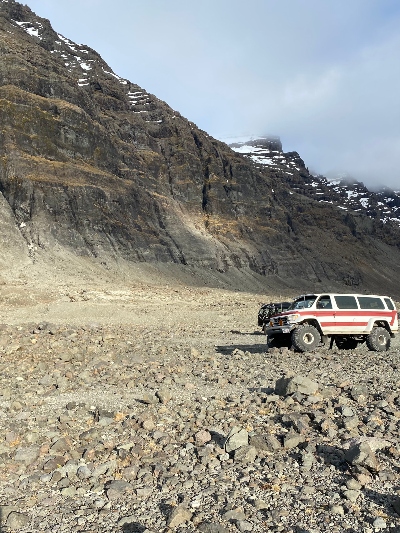
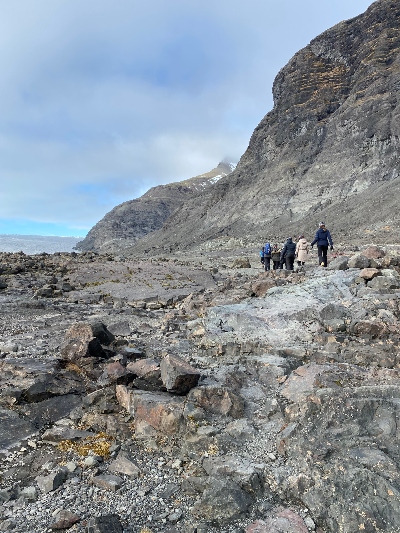
I was there in the beginning of March and usually at that time of year, this area is covered in snow. Not this year though. There was absolutely no snow at all. The whole weekend, it actually felt much more like summer than winter. A bit weird but still really nice.
When we reached the parking lot we all got some helmets and started the walk towards the glacier. Our guide told us a lot of interesting things during the drive and the walk. One of the things he told us was that this area we had to travel through to get to the glacier, has a great geological meaning. It’s the place where Old Iceland meets New Iceland.
Old Iceland Meets New Iceland by the Glacier
The East Fjords and the West Fjords are the oldest parts of Iceland. In between them, the volcanic activity takes place and new materials reach the surface. That is, New Iceland.
On our walk to the glacier we had some tall and very beautiful mountains on our right hand side. Mountains that mark the beginning of the East Fjords. On our left hand side we had sand/ashes and rocks representing New Iceland.
I don’t know about you but I found this fact quite fascinating. Had never really thought about it. Though about what it really means in the long run that the tectonic plates are tearing the country apart, making it possible for new material to reach the surface via volcanic eruptions. Of course that means “the middle” of the island (roughly speaking) is much newer than the east and west part of it. Duh! Well, I guess sometimes common sense isn’t that common. At least not when it comes to me and geology! 🙂
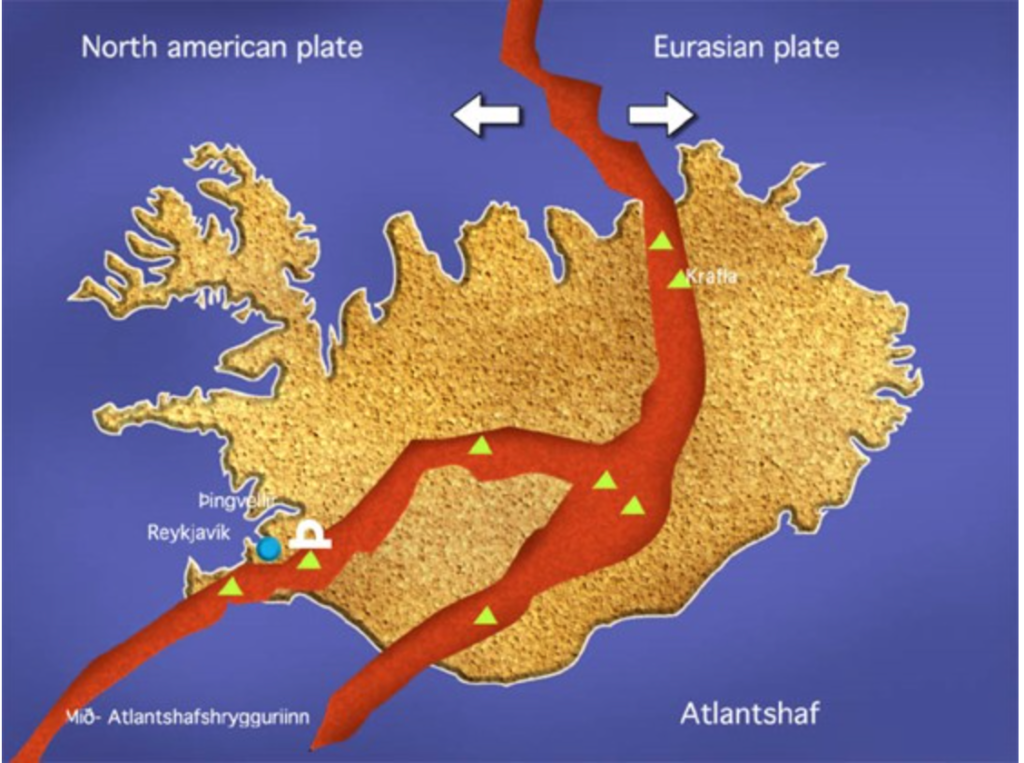
Anyways, this was a little side note. Now back to the ice cave.
Glaciers are constantly melting and changing. As a result, so do the ice caves. The ice cave season in Iceland is from October/November to March. Then the weather has been consistently cold enough for the ice caves to become stable enough to visit.
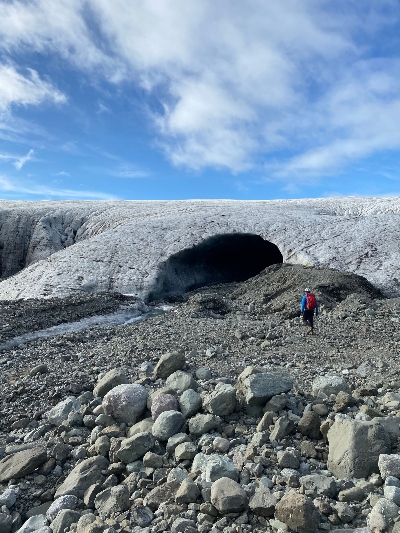
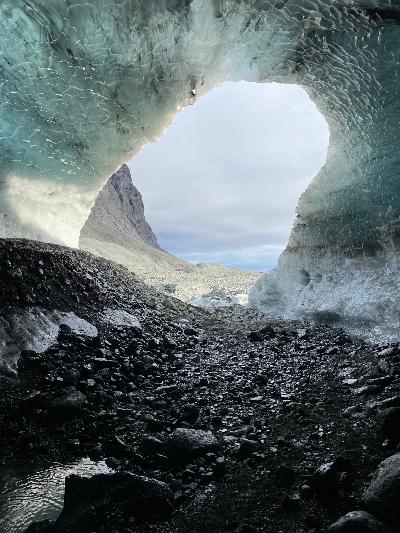
Some ice caves are only accessible for one season as they either disappear during the summer or get unstable and therefore not safe to explore. Others are accessible for more than one season but change from year to year. According to our guide, it wasn’t the first season for the cave we visited. We were lucky though as it was bigger and more beautiful this year than it was the year before.
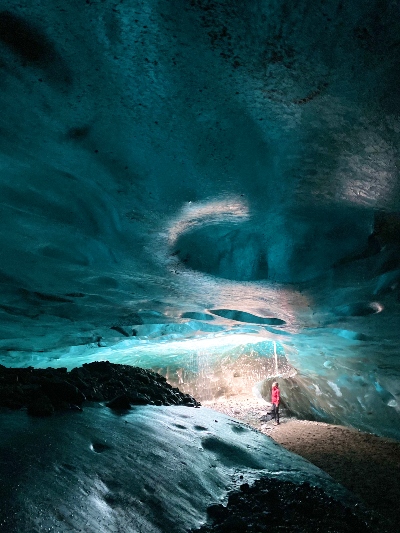

These constant changes mean you never know from season to season what you’re going to get when it comes to glaciers and ice caves. You can’t bring a picture of an ice cave and ask the guide to show you the exact same cave. That’s just not how it works in the ever changing glacier environment. On the other hand, it also means you can go on an ice cave tour every year and always see something new. Which I think is pretty cool.
If you liked this post and think some of your friends might be interested in reading it too, please help me spread the word. I’d really appreciate it if you’d share it on social media by using one of the small icons here down below.
Until next time!
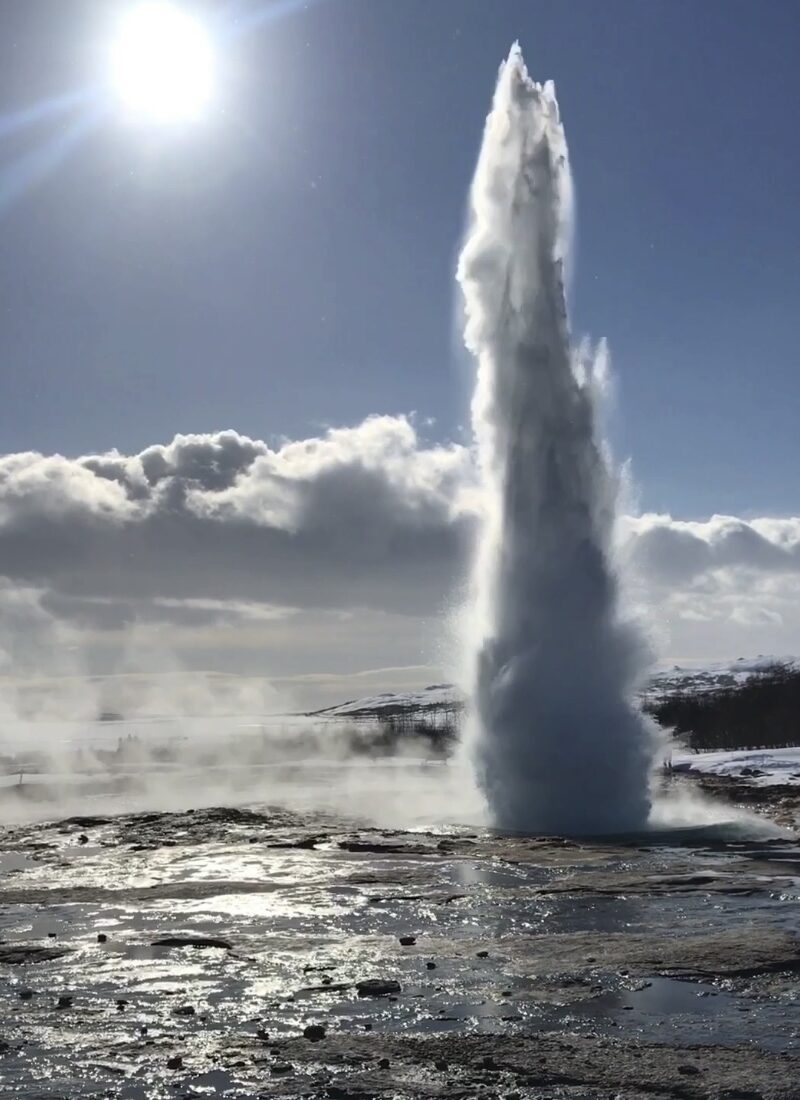
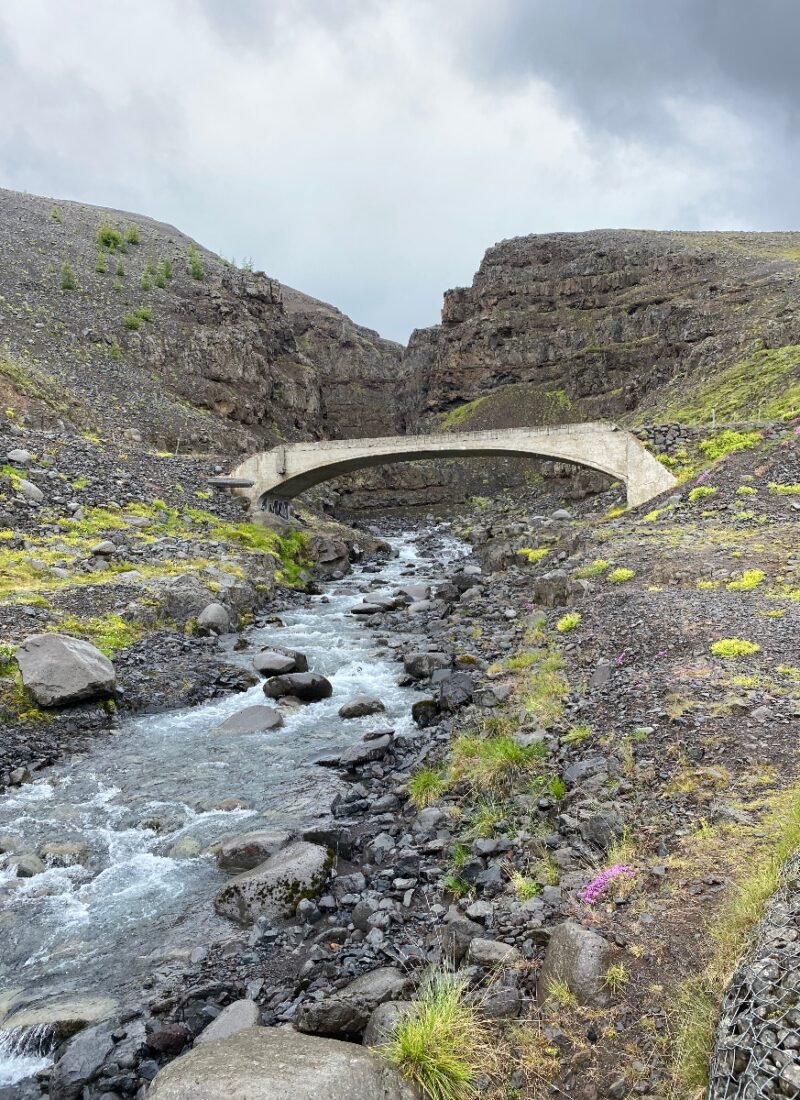
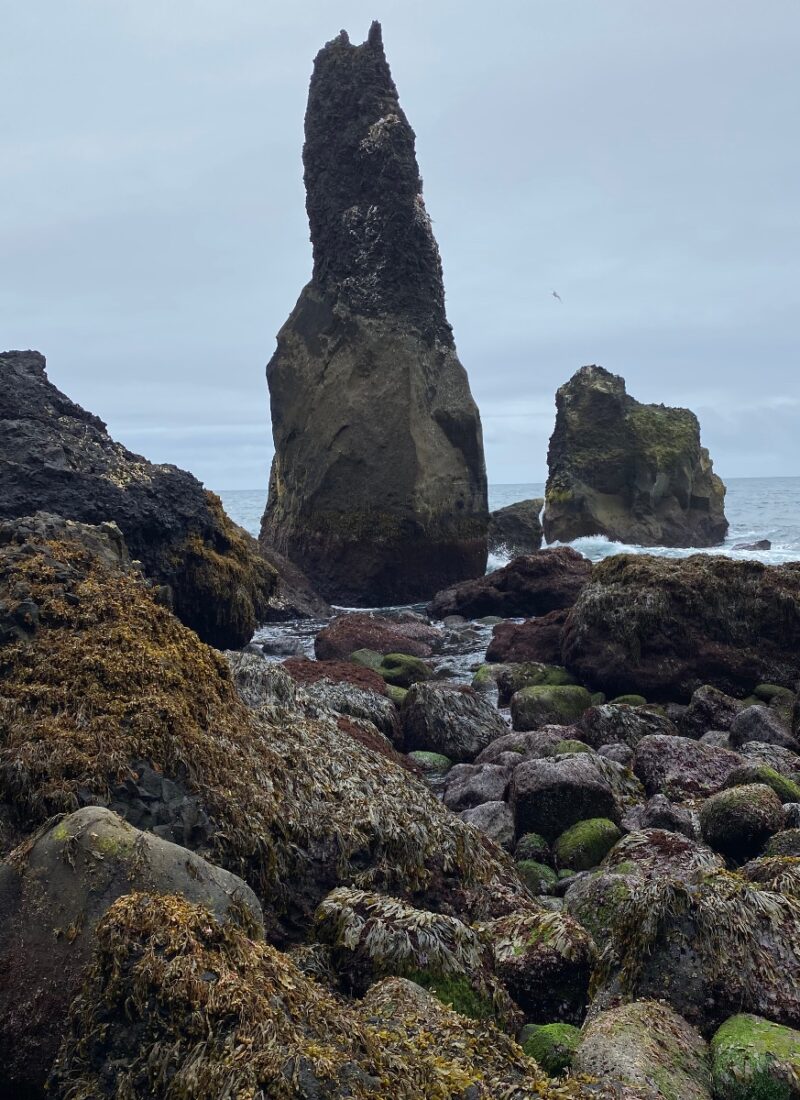
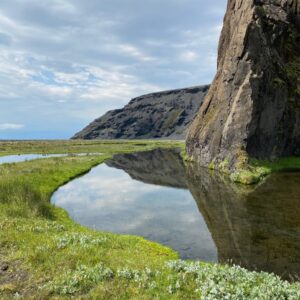
Leave a Reply